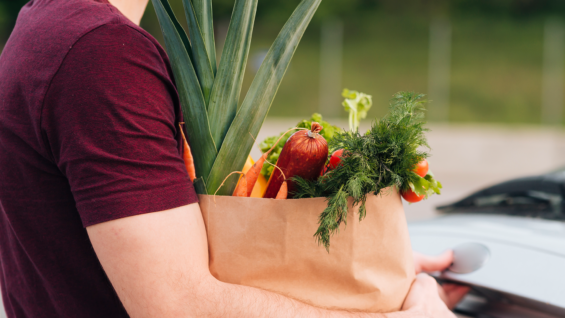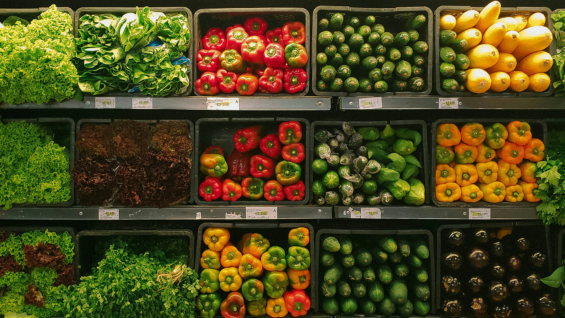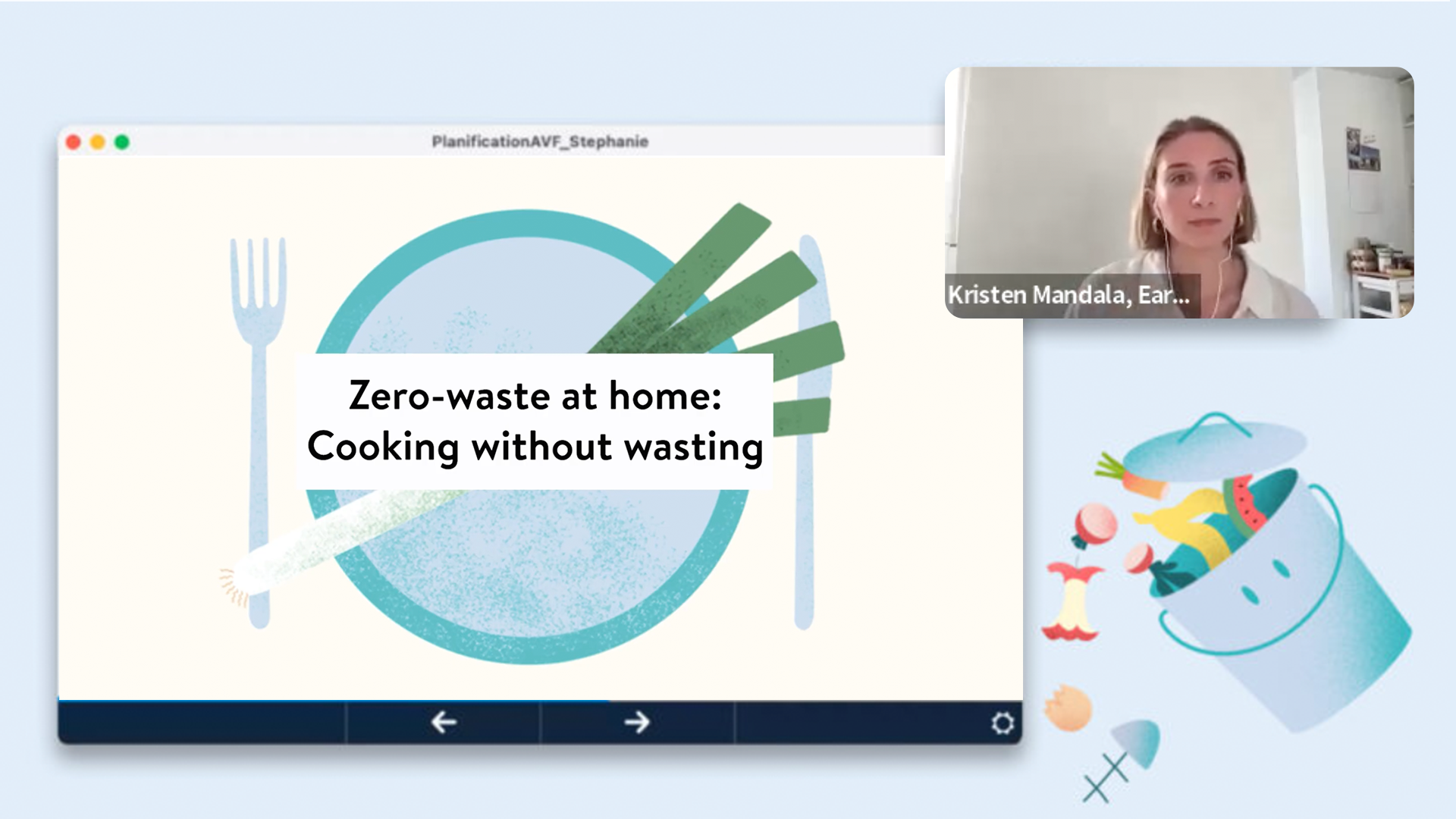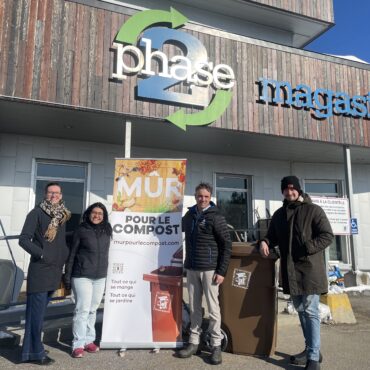Blog & News
Waste management

Last week, I was at the grocery store when I overheard a customer ask her friend, sounding a bit doubtful: “Do you think supermarkets REALLY make an effort to reduce their environmental footprint?” As a Waste Management Advisor at the non-profit organization Earth Day Canada, I can confirm it: behind the aisles and displays, our grocery stores are often doing much more than we might think! Of course, supermarkets mean big challenges. But it is possible to find balance—offering quality service and fresh products to customers, while fully embracing their environmental responsibility.
To understand how to take action, we need to go back to a fundamental principle: Waste Management. This concept relies on four essential pillars:
1 – Reduce: limiting waste generation at the source.
2 – Reuse: giving products a second life.
3 – Recycle: transforming materials and bringing them back into the cycle.
4 – Recover: converting waste into resources, such as compost or energy.
1. Reduce and Reuse: concrete solutions
Reducing food waste

Food waste is a major issue in Canada: nearly 60% of food thrown away is still edible, according to earlier studies from Second Harvest and VCMI. Since supermarkets account for almost 80% of food sales in the country, they play a key role in putting solutions in place to reduce these losses. To tackle the issue, several innovative initiatives have emerged:
• Anti-waste apps:
– FoodHero allows consumers to buy unsold products at reduced prices (up to 60% off). It is now available in more than 1,000 Sobeys, Safeway and Foodland stores across the country. A simple solution that cuts waste while offering savings to customers.
– Too Good To Go, present across Canada, partners with chains like Metro, Super C and 7-Eleven. Since its launch in 2016, Too Good To Go has helped save more than 400 million meals.
• Food donations:
The organization Greener Village in New Brunswick is building the first Perishable Food Recovery Centre in the Atlantic provinces. This centre transforms surplus food into frozen meals for food banks—an initiative that fights food waste while supporting community needs.

Photo: Susan Holt, Facebook
Reducing packaging, especially plastic

Supermarkets are at the heart of the plastic waste challenge: according to a recent report from Environmental Defence, nearly two-thirds of products on grocery shelves are packaged in plastic, from produce to prepared meals. This opens the door to many opportunities to rethink packaging and promote more sustainable options.
To drive real change, the Government of Canada now requires supermarkets to meet ambitious targets, as outlined in its Consultation Document: Pollution Prevention Planning Notice for Primary Food Plastic Packaging:
• 75% of fruits and vegetables sold without plastic by 2026
• 95% by 2028
These measures aim to reduce over-packaging and encourage bulk purchasing, deposit systems and reusable containers.
2. Recycle and Recover: essential steps
Waste isn’t always avoidable… but we can at least keep it from piling up in landfills that are already stretched to their limits! Instead of seeing waste as a problem, why not turn it into an opportunity? Thanks to recovery and recycling, what once seemed useless can become a valuable resource.
At Earth Day Canada, we believe every action counts—and the IGA Eco Fund is living proof! Through this program, launched in partnership with IGA in Quebec and New Brunswick, advisors support stores by organizing collection systems, acquiring proper equipment, improving sorting of recyclable and compostable materials, and offering training to strengthen best practices.

Since the program began in 2013, hundreds of stores have been able to equip themselves to sort waste efficiently, reduce their environmental footprint and give a second life to materials that would otherwise be lost. “Diamond”-certified stores are our champions: they reach impressive recovery rates, proving that with concrete solutions, a challenge can become an opportunity. To date, 450,000 tonnes of materials have been diverted from landfills—the equivalent of the weight of 3,000 blue whales.
In the end, with less landfilling, more recycling and composting, and better sorting practices, this shift toward responsibility is truly taking shape in our grocery stores.
3. Beyond waste
A supermarket’s environmental footprint goes far beyond its waste. To go further, they must continue to innovate:
• Green energy and energy efficiency:
Longo’s in Stouffville, Ontario, is the first supermarket in Canada to reach near net-zero energy consumption. It uses solar panels, CO₂ refrigeration systems and LED lighting, cutting its GHG emissions by 1,500 to 2,000 tonnes each year. A major step forward that could inspire other chains.
• Consumer awareness:
The IGA Eco Fund also organizes “Food Fight” workshops and produces content to help people store food properly and reduce waste. These educational initiatives are essential to involve consumers in the process.

Reducing the environmental footprint of supermarkets is a true challenge. Often, we don’t see everything that happens behind the scenes. Yet even if not all chains are perfect, many are committed—and best practices are increasingly adopted, from effective residual materials sorting to strong initiatives against food waste.

Waste Management, Advisor
Gaspard Martinez
Driven by strong convictions for a fairer and more sustainable future, Gaspard is committed to doing everything he can to help create the world he dreams of waking up to every morning! Naturally curious and lively, he enjoys meeting new people, discovering new activities, and exploring different ways of thinking. He’s always up for a coffee chat, an afternoon at a thrift store, a hike, an intense political discussion, an artistic creation, a pizza, and especially dancing to some disco!
View all posts...Related posts :
Contact us
Earth Day Canada
5818, boulevard Saint-Laurent
Montréal (Québec) H2T 1T3 Canada
Phone : (514) 728-0116
Toll free : 1 800 424-8758
Fax : (514) 303-0248
Email: hello@earthday.ca
2025 © Earth Day Canada. All rights reserved.
Privacy policy · Terms of use · Trademark









